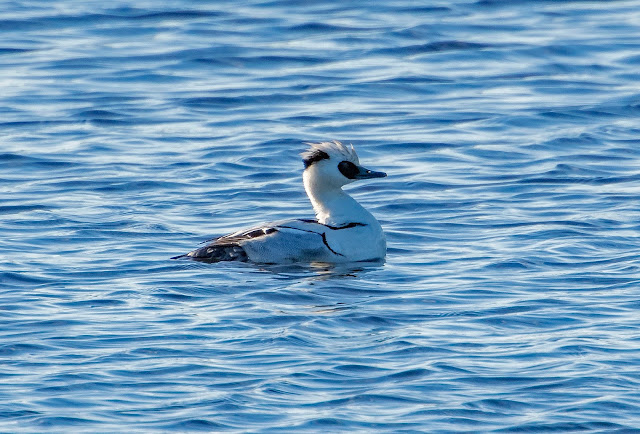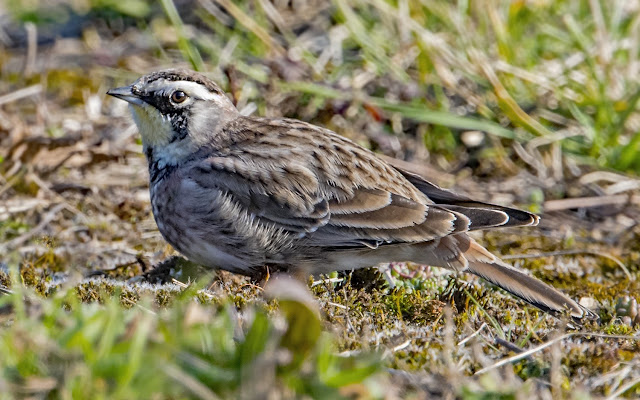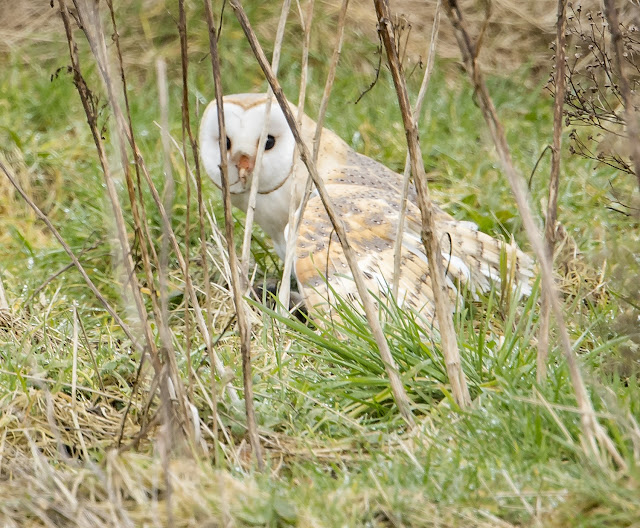
I asked if it was still present on our North West Birding WhatsApp group and after a phone call from fellow L.O.S. member George Pike telling me the bird it was, I decided to brave the minor blizzard in Tyldesley and hotfoot it to the Wigan Flashes. The weather here was totally different, with bright sunshine when I arrived.
I met George outside one of the entrances to the Flashes just as he was about to leave. He told me that he'd had good views but the bird has flown out of view behind the small island of trees on Scotman's Flash. It didn't show again for around two hours and the light slowly deteriorated whilst I waited for it to reappear.
Whilst I was deciding what to do do next, I met up with Wigan Flashes stalwarts David Bretherton and Warren Topping and they convinced me to walk back along the canal with them and have another look. David left Warren and me to carry on looking and I eventually spotted the bird flying and then landing in the middle of Scotman's Flash.

Although it did slowly make its way to the eastern bank of Scotman's Flash, it never really came that close. Warren and I tried to approach it several times using the few trees and bushes along the bank for cover, but it seemed very sensitive to our movements even from a long way off. So I had to be happy with these distant shots.


























































